GT6 Tuning Guide by Motor City Hamilton
Prologue
I thought it would be useful to describe the way I approach tuning. I primarily build tunes for my use and maybe do an occasional request. I have no interest in the tuning garage arms race for having the most cars listed in the garage. I also like to spend time with a car before calling a tune finished and posting it (I have a couple dozen tunes from GT5 that I never got around to posting – may have to do that some day). I don’t know how some of the garages can crank out so many tunes in such a short time. I will give Praiano a break from that thinking because every single car I have driven from his garage is near perfection. A few tweaks for my driving style and I am off to the winners circle. I also have respect for the Clueless garage. They crank out like five tunes an hour our something (<--exaggeration) but they do have more tuners over there than the pizza delivery services. Plus I think they are among the nicest, most helpful people on GT Planet. So, in my long winded way, I am saying that if you are looking for a specific car tune, start with them or any of the other garages that you like. I will not be able to keep up with their productivity.
So why are you here? What can Motor City Tunes do for you? I will continue to post tunes for most everything that I drive and will still do an occasional request tune, but I think my role on GT Planet serves a different purpose. I am satisfied with taking on the role of the teacher. In real life I am a strategist and a problem solver. Solving car handling problems fits with these skills. Whatever tune you are using, it is likely that I can help make it fit better for your driving skills. Don’t be shy about asking for advice.
Tuning Goals
The first thing that I do when I use a new car in Gran Turismo is to think about how I plan to use the tune. I thought about it a bit and came up with four different ways that I use cars in Gran Turismo:
1.) Race online. These tunes are never complete. I will try new things all the time. I will have three or four versions of this car for different tracks. These are the ten or so cars that I love and use most. Still building my list of these in GT6 (Honda S2000 Type V ’03, Mustang Boss 302, Honda Takata Dome NSX '03 and Mazda MX-5 NA and NASCAR are the only ones on the list so far.)
2.) F.I.T.T. tuning competition. I try to wring everything that I can out of these tunes in the time allowed (usually three weeks). I will test between 300 and 1000 miles and change as many settings as I can, looking for a little bit extra for the competition track.
3.) A-spec race to beat the AI. If I do not plan to use the car past getting the awards from an A-spec race or A-spec seasonal, I will only spend ten or fifteen minutes tuning. I am finding that in GT6, I have been de-tuning just to make it any type of challenge. In 600PP A-spec races I am picking cars with 400 to 450PP and using harder tires than the AI. A-spec in GT6 is far too easy in my opinion. I will still add suspension and LSD and tune a little, but I don’t add many parts or spend much time refining the tunes.
4.) Time Trial. On most occasions I will just stop by the time trial long enough to get the gold and gain the credits. I will max out the allowed PP, slap on a base tune, get the gold and out. Every so often, PD will post a time trial with a car that I like. If I am planning to use a car more long term, I will hit that time trial hard.
I encourage you to set goals for the car that you are using. If you are just trying to get by with something temporary, grab a base tune from above (once I finish them) and go get the gold and credits. If it is a car that you plan to use long-term, you will want to read every word of the below tuning guide. Test, find what works for your driving style and ask questions in the garage.
Building A Tune From Scratch
I am just going to lay my approach out there. This is how I work through a tune. I do things in this exact order.
Oil Change – Are you tuning a short term car or a long term car? For a short term car, do
not perform an oil change. It robs power at the same PP level. Take any car and note the stock PP and HP levels (example: Scirocco R ‘10 at 438PP/252HP). Next perform an oil change and note the new PP/HP levels (Scirocco @ 445PP/265HP). Finally, use the power limiter to re-establish the car’s original PP level (Scirocco needs 94.5 power limiter to equal 438PP). The new HP rating for the Scirocco is now 250, a 2hp drop from stock (or 0.8% lower horsepower). I have tested this on many cars in GT6 and the average drop is a 1% horsepower loss. If you are using a car for a short period of time, do not perform oil changes. There are more efficient ways to gain power for a PP build. If I were entered into a weekly racing series I might consider purchasing a brand new car for each event and enter without an oil change.
Adding parts – I don’t build very many maxed out tunes. Most of the racing that I do has a set PP level and tire selection so this is how I decide what to add.
Weight
I start with considering the car’s weight. I will admit that I have not done extensive testing in GT6 yet around weight, but so far the theories from GT5 seem to be working. I do not have definitive rules on when to drop weight vs. add power. I would say that my method has much gray area. I try to get into a weight range and then move to power. Weight is always thought about first. When I can get a car into the weight ranges listed below, my lap times are always faster than going only with power. This is what I look for:
- Heavy cars need weight reduction to get them between 1400 and 1450kg
- I prefer average cars that are between 1200 and 1250kg
- Lighter cars in stock form do not always need weight reductions, but 1000kg seems to be the magic number
Power
There are some significant changes to the PP and HP gains in GT6 that are making parts selection much more complicated. In GT5 there were some clear winners (low PP gain vs. high HP gain). In GT5 on almost every car, the first power part that I would add is the racing exhaust. Next were exhaust manifold, intake manifold, air filters and ECU, all being really equal on PP/HP efficiency. The least efficient items in GT5 were the catalytic converter, turbo and supercharger. On almost every car that I tested in GT5, this order was really consistent. Not so in GT6. For comparison, I built ten different cars from FF Ford Focus ST to FR BRZ S’12 to MR NSX R to Honda S2000 to Ford GT to Ferrari FXX to Mustang Boss 302, etc. and every single one had a different list of parts that were most efficient PP/HP. In GT6, racing exhaust no longer won hands down and catalytic converter moves from the junk pile to the most efficient part on most cars.
So how do I choose? Below are two examples of popular cars in the GT series. I have listed all of the weight and power parts and their effect on PP and weight/HP. Note that these are done without oil change for the reasons mentioned earlier in this tuning guide. Most of the columns are self-explanatory. The one that may be confusing is “Gain/PP.” For weight reduction parts I have listed weight loss divided by pp gain. All three stages of weight reduction seem to have the same efficiency value per car (18kg per 1pp for the M3). When you scroll down to the power parts under “Gain/PP,” it gets much more interesting. This formula is horsepower gained divided by PP gained. A higher number is more desirable, more efficient. In the column next to the power part gain/pp I have listed a rank based on this efficiency. Below are results for the M3 Coupe '07 @ 525PP and Ford GT ’06 @600PP.
Choosing Parts and Why - M3 Coupe '07 @ 525PP
1. Window weight reduction and carbon hood. It only cost 1PP for both. I will be adding this to every car I tune in GT6 from here forward.
2. Weight reduction stage 3. This car is just too heavy. Stage 3 takes it down to 1340kg and combined with window and carbon hood the car will now be all the way down to 1325. I will probably add ballast and run this car at 1400kg. Ballast will allow me to play with the front/rear balance during tuning.
3. Sports Catalytic Converter. The winning power part, hands down with 3.25 hp per 1 pp.
4. Engine Tuning Stage 3.
5. Semi-Racing Exhaust.
6. Power Limiter 98.2%.
Build is now at 525PP and 491HP.
Choosing Parts and Why – Ford GT ’06 @ 600PP
1. Window weight reduction and carbon hood. It only cost 1PP for both. I will be adding this to every car I tune in GT6 from here forward.
2. Weight reduction stage 3. This car likes around 1200kg. Stage 3 takes it down to 1204kg and combined with window and carbon hood the car will now be all the way down to 1189. I will add ballast instead of using the power limiter. I want to run this car somewhere between 1200 and 1250kg. Ballast will allow me to play with the front/rear balance during tuning.
3. Sports Catalytic Converter. The winning power part, hands down with 4.25 hp per 1pp.
4. Racing Exhaust at 4.0 hp per 1 pp.
5. Isometric Exhaust Manifold at 4.0 hp per 1 pp.
6. Ballast at 24kg.
Build is now at 600pp and 628hp.
Other parts
If you are PP racing, I would always add the Triple-Plate Clutch, Carbon Drive Shaft and Racing Brakes, if available. If I am on a budget and do not plan to use a car long-term, I skip all three of these parts. They provide minimal gains so they are not really worth the money for a sometimes car, but why not take advantage of every little bit if you are racing online or in a time trial.
Chassis stiffness – I am not a fan of. It adds understeer just as it did in GT5. I would use it as a last resort on very difficult MR or RR cars. The Yellow Bird comes to mind. So does the Enzo.
Wings on street cars – I do not add wings to my street car builds. It adds more rear grip and on most cars in the GT series I am trying to do the opposite, gain front grip. In GT5 it also cost PP to add wings so that just robs from the ability to drop weight and add power. Currently in GT6, downforce does not add to PP. I expect PD to change this in the future, but for now, downforce is simply a grip tool. Only add if you need more rear grip. I have read about a programming glitch with wings, but I have not tested for this yet.
Wings on tuner cars – There are many tuner cars that reveal their front grip adjustments when you add a rear wing. I do add the rear wing if it allows for me to adjust the front downforce all the way up and the rear all the way down.
Downforce on race cars – Since adding downforce does not currently add to PP, use as much as you can on race cars for circuit tuning. I will often reduce rear downforce to improve cornering. Also, if I am racing on a circuit with an extremely long straight, I will lower front and rear downforce to around the half-way point. There does seem to be a top speed penalty for max downforce, but it is worth so much in the corners on most circuits.
Downforce on NASCAR at Daytona – I use min/min front/rear for the straight line speed gain.
Flat Floors – I have not had the opportunity to test. I have read that it slows most down in the straights. Too much downforce?
Transmission – You must add all power parts before setting the transmission. I use the flip trick. I like to set it and forget it. Others like Praiano use a similar method but will match the shift points to the engine’s RPM. It is a bit over my head. I should really take some time to have Praiano build a gearbox for one of my tunes so that I can see the difference. A customized transmission is worth more than adding most power upgrades and it doesn’t cost any PP points. The transmission is a must on a car that I plan to use long term. If I am detuning for the A-spec races I will sometimes run the stock gearbox. Also, I like numbers that end in zero or five simply because they look cleaner and they are easier to type into tuning sheets.
Transmission Flip
1.) Final Gear to maximum (all the way right)
2.) Max Speed to minimum (all the way left)
3.) Highest Gear to maximum (all the way right – probably rounded)
4.) 2nd Gear to about 80% left (example: for a range of 1.915 to 2.427 I pick 2.000)
5.) For gears 3rd through highest, make relatively even spacing between gears. I tend to leave a little more space between 2nd, 3rd and 4th than I do between 4th, 5th and 6th. If you look closely at my settings you will see that the gear lines get slightly closer as you move from left to right (1st to 6th).
6.) Set top speed through Final Gear, not Max Speed. Do not touch the Max Speed adjustment at any time past step two. Use the Final Gear setting to achieve just before redline on the longest straight.
7.) Set first gear. If for rolling starts I tend to move this slider to the right and match my even spacing. For standing start racing you will need to test out a few. I have been burned a few times in online racing for having these settings too far left. For standing starts, 1st gear may need to be much further to the right. When you have the launch you are looking for, you will then need to go back and even out all of the gears again.
8.) Further optimize the gearbox for a specific track. You may find that a 2nd, 3rd or 4th gear shift is in a bad spot, mid-corner or right before a braking zone. Re-adjust these gears to optimize for the specific track. For example, if the car wants a 2nd to 3rd gear change just before the exit of a key corner, move the 2nd gear slider to the left and re-adjust the spacing of the other gears. Or, for example, if you are nearing a shorter straight section and find the need to shift from 4th to 5th right before a braking zone, move the 4th gear slider to the left then re-adjust the spacing of the other gears.
Limited Slip Differential - Through my GT6 testing, I am seeing that the LSD works the same as it did in GT5. Here is the description that I wrote in my GT5 garage. This theory is still working very well for me in GT6. Just thought I would share another perspective.
LSD Accel: This setting has one purpose, to manage inside and outside wheel spin. If the inside wheel spins first, raise this setting. If the outside wheel spins first, lower this setting. Most often the tire in need of help will turn red upon throttle application from the corner apex. Sometimes, a car will get loose on you, but neither tire turns red. In this case, put two or three levels harder tires on the car and mash the throttle in the slow, 2nd gear corners and you should be able to find which tire turns red first. Keep adjusting until both drive tires spin at the same time and this setting will be optimized. On a few cars, you will find a situation where one click higher will make the outside tire turn just a little red and one click lower will make the inside tire a little red. On these rare cars, you cannot fully optimize this setting and will need to choose one.
In GT6 I am noticing nearly identical settings as I used in GT5 (8 to 20 - never seen a car need higher than this).
LSD Decel: This setting has one purpose, to manage stability under braking, turn-in and when coasting. If your car is loose (oversteer) in these situations, raise this setting. If your car has understeer during these conditions, lower this setting. Nearly all of my under 550PP street car tunes have settings between 5 and 7. On pure race cars like LMP cars, JGTC, FGT, F1, 2J, etc., I run much higher decel settings.
In GT6, the setting works the same way, but I am noticing many cars need higher settings than what I used in GT5. For example, on any Miata in GT5 I used a decel setting of 5. I have tested seven Miata in GT6 and they are ranging from 9 to 22 at the moment.
LSD Initial Torque: This setting determines how much power is needed to activate the diff, to make it lock. What this means in GT5 is that a higher number produces more understeer and a lower number produces more oversteer. It is that simple. Since the 2.09 update this characteristic is more pronounced and even more noticeable from apex to exit.
The LSD does not add or subtract acceleration. The LSD cannot send more or less power to the drive train. The LSD can only distribute the given amount of power to each of the drive wheels. I see many on this site confuse the LSD with slipper clutches. This must come from R/C off road racing where slipper clutches are popular. In R/C racing a sipper clutch is added as a bolt on to the drive train and will actually slip as power is applied and grip in the higher revs to keep the rear wheels from spinning. There is still an LSD in those gear boxes and they are not set up to slip. They are set up to do the only job of the LSD, to distribute power from side to side under acceleration and braking. If you set them up to slip, they melt. Same goes for real world, if your LSD slips, it melts. Heat is the #1 enemy of an LSD. This is why we have traction control in the real world and in GT5. Traction control limits power through the drive train to the wheels, not the LSD.
LSD tuning on 4wd – I am not ready to post definitive testing results yet. These are the settings that I ran in GT5. Front 10/12/7 and rear 8/11/8. Much more testing needed here.
Torque-Distributing Center Differential on 4wd – I need to do more testing with this adjustment but this is where I am currently.
On rally tunes for dirt and snow, 50/50 has been the best. I can put the power down best from mid corner to exit with this high front value. Lowering it on dirt/snow can help corner entry and mid corner rotation, but the loss of exit speed kills the lap time. You will have to find other ways to improve corner entry for 4wd cars.
On tarmac tunes – I start out at 50/50 and try to other tuning adjustments first. If I cannot get the car to enter the corner and rotate, I begin to lower the torque split. I don’t like to go below 35/65 as the car begins to handle much more like a FR drive train. What you lose is that aggressive 4wd jump from mid corner to exit. I cannot find a hard, fast rule for this setting so it becomes a bit of trial and error.
Suspension Tuning Introduction
If you started at the top of this tuning guide and did every step up to here, you might be totally satisfied with your tuning improvements and choose to go no further. For GT6, the driving physics have improved so much that every car is more fun to drive than its GT5 version. Much speed improvement and balance improvement can come from the items listed above. Some will be content to add the Fully Customizable Suspension and just use the stock settings. You can do that and still be fast. Everything from here down could be seen as fine tuning.
So let’s talk tuning. Tuning is complicated. In the real world, there are general understandings of what settings can do, but some things work on some chassis and others just do no. I think we have set a pretty high expectation for GT6. We start to develop a basic understanding of what settings generally do and then we jump in a car that bends or breaks all of the rules. What happens next, we start believing in backward settings.
For me to develop my understanding of the GT6 physics, I needed to go back to my real world roots. I re-read my two favorite tuning books, Caroll Smith’s
Tune to Win and Don Alexander’s
High-Performance Handling Handbook. Five years ago when I race a Honda Civic, we had adjustable shocks. When I transitioned to Spec Miata, we have non-adjustable, sealed Bilstein shocks so the unutilized knowledge began to fade from memory. Once I reconnected with this past knowledge, tuning in GT6 started to make more sense. With a better understanding of real world theory, I would at least know where to start in GT6. It has been a complete guessing game and trial and error for me in GT6 up to this point.
I have been working on a different way to think about tuning in GT6. It involves really focusing in on the problem to solve, then making a list of the possible options at play. It is one thing to know generally that lighter front springs and heavier rear springs can mean less understeer, but to know when to try that vs. other options available is the real key to my new system.
Below I will outline three different levels of detail. I know that some will visit this guide just for some quick understanding of things and others will read every word, make notes and test for themselves.
1. Basic functions of the settings
2. Added detail behind each function
3. Tune problem solving
Basic Functions of the Fully Customizable Suspension
Ride Height
- A lower front end will encourage oversteer
- A higher front end will increase understeer
Spring Rate
- Low front rate/high rear rate will encourage oversteer
- High front rate/low rear rate will increase understeer
- Higher spring rates help reduce pitch and roll, and turn more sharply
- Higher grip tires can handle higher spring rates
Dampers
- Shocks can be used to fine-tune the handling balance of a racecar during transitions, but will not cure a big handling problem
- Should normally be set relative to spring rate (similar distance across slider)
- Extension should generally be set stiffer than compression
- Damper tuning is complex and will be covered in more detail in the section below
Anti-Roll Bars
- Affects lateral rolling movement, not longitudinal pitching movement
- Generally, ARBs need to strike a balance with spring rate, like using soft springs with stiff bars or vice versa
- Stiffer ARBs can transition a small amount of weight from outside tire to inside tire
- Softer ARBs can be useful on bumpy tracks to keep both inside and outside tires more
connected to the track
- Low front rate/high rear rate will encourage oversteer
- High front rate/low rear rate will increase understeer
Camber Angle (-)
- Zero camber is currently fastest in GT6 (1.03 update)
- Adding camber to the front will increase understeer
- Adding camber to the rear will increase oversteer
Toe Angle
- Front toe-in will increase entry turn in, but also reduces mid-corner to exit grip
- Front toe-out will increase mid-corner to exit grip, but also reduces entry turn in
- Rear toe-in will increase understeer
- Rear toe-out will increase oversteer
- Rear toe settings seem stronger, meaning lower increments of movement tend to produce
stronger results than higher increments of movement to front settings
Brake Balance
- Low number equals less braking power, high number equals more braking power
- ABS1 allows for higher settings than using ABS0
- Lock up can occur at lower numbers when using harder tires
- Higher numbers can be used with softer tires as lock up is more difficult to induce
- Higher front than rear will increase stability during trail braking
- Lower front than rear will induce oversteer or turn in during trail braking
Downforce
- Low front rate/high rear rate will encourage understeer
- High front rate/low rear rate will increase oversteer
- Higher downforce will reduce top speed
Ballast
- First, view car in chase view to determine whether red tire is overloaded beyond its grip limit
or is sliding
- For sliding front tires, move ballast forward (negative number), which adds weight to the
front tires and encourages more grip
- For overloaded front tires, move ballast back (positive number), which removes weight from
the front tires, returning them to be within their grip limit
- For sliding rear tires, move ballast back (positive number), which adds weight to the rear
tires and encourages more grip
- For overloaded front tires, move ballast forward (negative number), which removes weight
from the rear tires, returning them to be within their grip limit
Added Detail and Testing of the Fully Customizable Suspension
Ride Height - Do not go too low on ride height. I have been playing with ride height a bit. I need to do more wide split testing, but for most tracks, slammed at either end seems to be bad. I have been tuning Muscle Cars lately. I started at the stock height and just started to lower the rear. Rear stability picked up through most of the turn. I kept adding until I had the balance that I wanted (about ten points apart) so then I started dropping the car by five at both ends. There is a point where the rear got too low and I could immediately sense the loss of grip and a snap oversteer situation. I think that is the point where bottoming out is occurring, though not visible in the replay, so maybe there is another situation. The in-game description mentions that when lowering the car we need to add spring rate to make up for the shorter suspension travel. I think that lowering the car in GT6 also shortens the shock travel. This would take away up travel (i.e., hit a bump and the shock compresses, then on extension the tire stops before the chassis does). This condition would remove the tire from the road or at least unload it and reduce grip. So it may work to encourage rotation. Slam the rear of a car super low, drastically shorten the shock throw, stiffen the spring and lose a ton of up travel. That would cause a wheel to unload, especially the inside rear. Do not go too low on ride height.
Spring Rate- Seems to work similar to real world, but has its limits. What I mean by limits is that if I were to build a Honda Civic with super soft front springs and super hard rear springs, the car would be un-drivable - it would spin in every corner. In GT6, it may still understeer.
Inconclusive results so far on how high to push spring rates. I have found success staying near stock settings when on Comfort Soft and Sort Hard tires. I have done limited testing with higher rates on say Racing Soft tires. I plan to do much more testing with this concept around higher spring rates.
Dampers Compression & Extension - Shocks can be used to fine-tune the handling balance of a racecar during transitions, but will not cure a big handling problem. If changes to dampers seem to produce very little results, there may be something else wrong with your tune. Go back to some of the mechanical settings first, then come back to dampers.
In general, rebound damping controls how fast weight leaves a tire, while bump controls how fast weight goes onto a tire. You can see in the drawings below that the top graphic shows a non-optimized shock, while the bottom picture indicates a properly dampened shock.
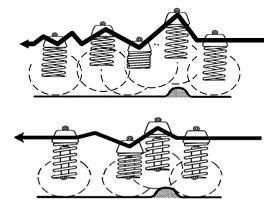
The true magic of tuning damper settings is in controlling weight transfer throughout the corner. By manipulating weight transfer, handling can be changed slightly. When a tire turns red in GT6, it means one of two things. Either that tire is overloaded beyond its available grip level or it is sliding or skimming across the pavement. The first thing that I look for is to view the car in chase view to determine which condition may be causing the red tire. For example, if my outside front tire is turning red during mid-speed sweeping corners and the weight seems to be leaning more rearward, the car needs more weight pushed onto the front tires. Another example involves a red outside front tire in a slower, 180 degree corner where the car’s weight seems to be leaning forward, over the front axles. In this case, the front tire is being pushed beyond its grip limit and less weight needs to transfer to the nose of the car. Dampers can be used to help solve these two tuning problems and more. I share much more detail on dampers in the Tune Problem Solving section below.
Anti-Roll Bars - I must admit that I need to do more testing around ARBs. I have been using settings near the stock settings of 3/3 and just adjusting a split to induce oversteer or understeer. That has been working very well, but I wonder if there is even more speed to be found. I have not tested heavy springs with soft bars or soft springs with heavy bars.
Camber Angle - Camber in GT6 has been programmed oddly. Zero camber currently has the most grip. I start with zero front and zero rear. I try to use every other tuning tool available, but if I cannot get a car to rotate, I add rear camber. If I cannot get the rear to stay planted, I add front camber.
Toe Angle - I tend to set rear toe first. Rear toe seems to have a stronger effect and front seems to be more of a fine tune. On most FR, MR and RR cars I will generally have between 0.05 and 0.25 positive toe. Some rare cars, like American Muscle, will need negative rear toe. FF and 4WD cars almost always need negative rear toe and I generally set between -0.05 and -0.35. I am looking for a good rotation around the apex of the corner. A lower number produces more rotation and a higher number provides more stability.
Then I move on to front toe. Front toe is simply used to balance the corner, to gain a similar level of turning ability at entry, through the middle and out to corner exit. Positive front toe provides more turn-in ability and negative front toe produces more front grip from mid-corner through corner exit.
Brake Balance - I use ABS1. I also use the NIXIM brake pedal mod on my G27 pedals. It provides three levels of feel; soft at first, medium pressure through the middle and finally hard pressure at the bottom. If you are still using the stock brake spring on a G25 or G27, the NIXIM is worth every penny.
I try to set the overall levels first; 5/5 or 4/4 or 3/3, etc. On comfort soft tires I am noticing settings between 2/2 and 4/4. With sport hard tires I use 3/3 to 5/5. With sport soft tire and higher, settings can be between 5/5 and 7/7 or 8/8. I pick the number set using three inputs. First is by turning up the TV volume and listening for tire squeal or lock up under hard braking. For rally cars on dirt, PD did not program tire squeal. Rather, they programmed the engine noise to stop completely as an indication that the tires are locked up. Second is by watching for red tires in the tire indicators. Third is by noticing how deep my foot is into the brake pedal. If I can barely get on the brakes and lock up occurs, I lower both numbers. If I am fully deep into the pedal I will raise brake balance.
Next I set the front/rear split. Not all cars need a split. The challenge to setting this split is that PD has not given us very good indicators in GT6. A wheel turns red and we do not know if the wheel is red due to being overloaded or under loaded. Thus the trial and error nature of the game and the tendency for people to think settings are programmed backward. I will change to chase view to better see the car’s weight transition. Generally, if the car is loose under braking, the
rear brake balance is too high. Most often with this condition there are no red tires present, just the noticeable over rotation during trail braking. As for red tires on the front during braking, the red indicator can be notifying us of one of two conditions.
Front condition one - overloaded front tires. For this, lower front brake balance and/or raise rear.
Front condition two – sliding front tires. For this condition, the front tires need more weight on them so raise front brake balance and/or lower rear.
Downforce - I play GT6 to road race. I do not drag race, nor do I do top speed runs. Someone else can test that. What I am more concerned with is the fastest corner speed possible. Corner speed wins road races. I do not add downforce to street cars on street tires. I try to use mechanical grip first. Plus, most street cars in GT6 understeer. I will almost always use max front downforce on race cars. I will use max rear downforce if I can get the car to mechanically turn well. If not, I reduce rear downforce until I find a desirable amount of corner rotation.
Ballast - I am not really sure why some tuners think that using ballast is cheating. I received a PM from a fellow tuner saying that none of my tunes were worth anything because I used ballast. I think that is such a short sided view. PD programmed it in the game, we use it in real life and it really, really works well in GT6. So why would I want to avoid using it… to go slower?
Tune Problem Solving
See this section in post #11 or click the link below.
https://www.gtplanet.net/forum/threads/motor-city-tunes-gt6.291066/#post-9020421

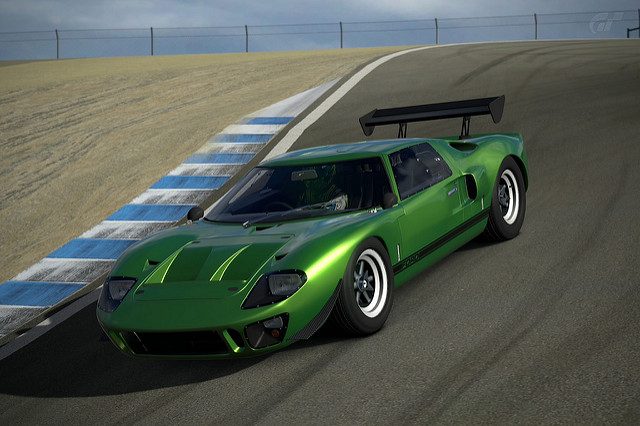


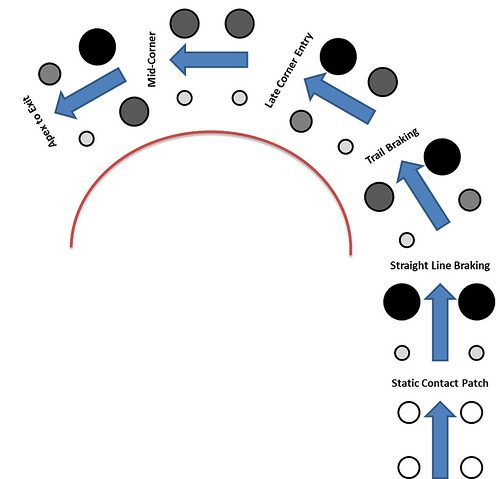



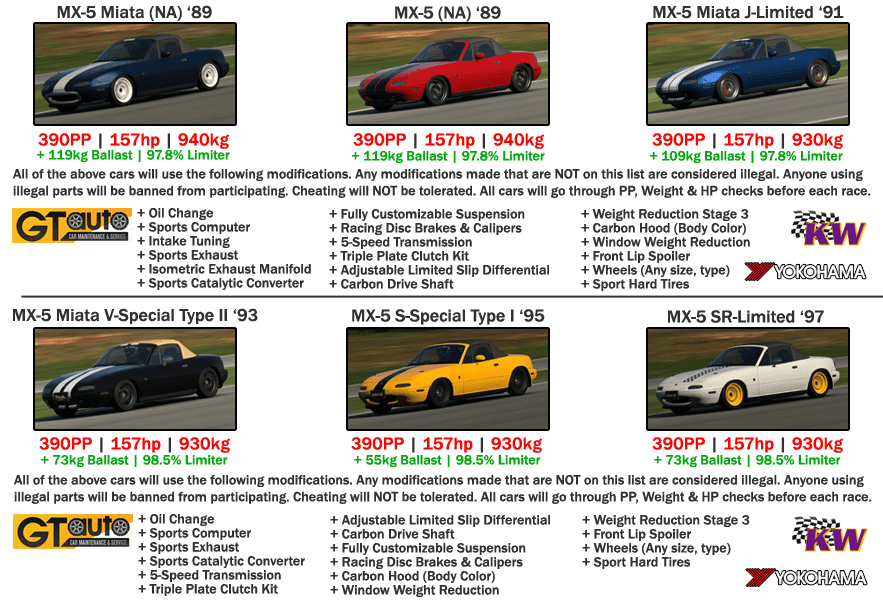



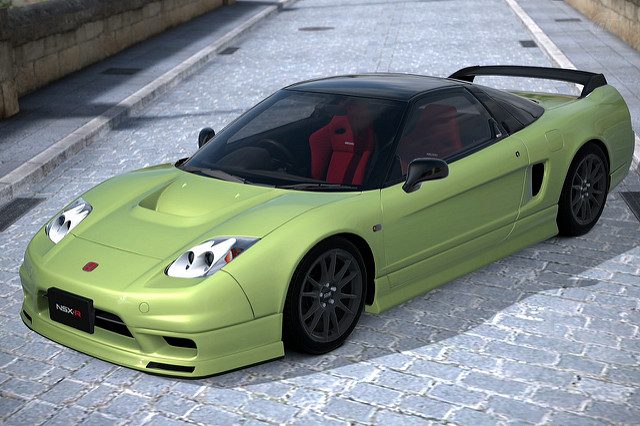
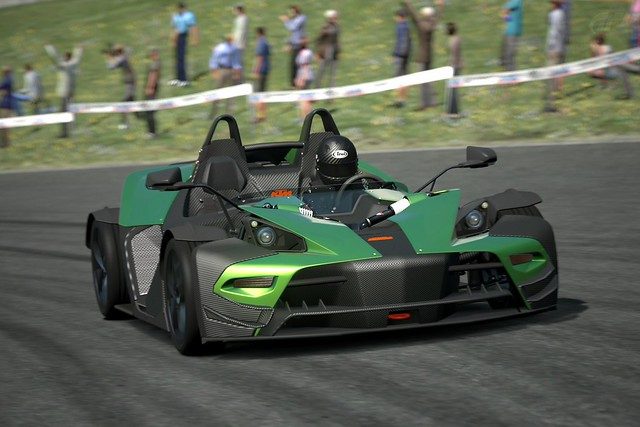
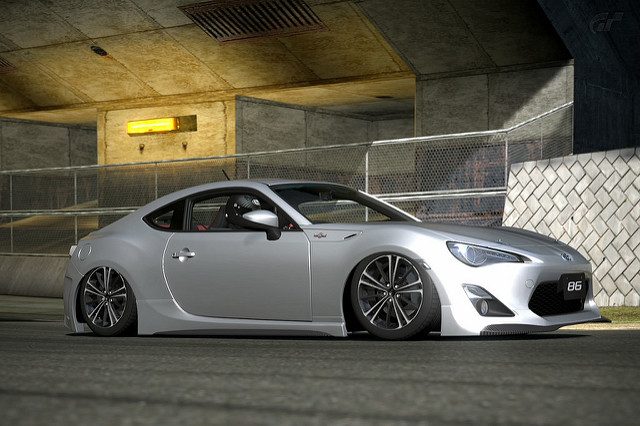

 Anyways, hope to see you there one day. Keep up the great work with your garage, you seem to have the tuning down to a fine art for GT6, you're doing a phenomenal job.
Anyways, hope to see you there one day. Keep up the great work with your garage, you seem to have the tuning down to a fine art for GT6, you're doing a phenomenal job.
 I always run with SRF on in the Seasonal TT's, just like most everybody else on the leaderboard. I'm not trying to be some elitist or hero here by running without SRF, I'm just trying to be competitive with the rest of the leaderboard that is using SRF. As soon as they disable it or come up with some other solution, I will be glad to run without it. Sounds like you're calling me out just because I'm using it, which I really don't like. I've been called a cheater and everything else just because I use it and I'm really getting tired of it. Look at my WRS Registry ranking.....I obviously don't need it to be fast.
I always run with SRF on in the Seasonal TT's, just like most everybody else on the leaderboard. I'm not trying to be some elitist or hero here by running without SRF, I'm just trying to be competitive with the rest of the leaderboard that is using SRF. As soon as they disable it or come up with some other solution, I will be glad to run without it. Sounds like you're calling me out just because I'm using it, which I really don't like. I've been called a cheater and everything else just because I use it and I'm really getting tired of it. Look at my WRS Registry ranking.....I obviously don't need it to be fast. 